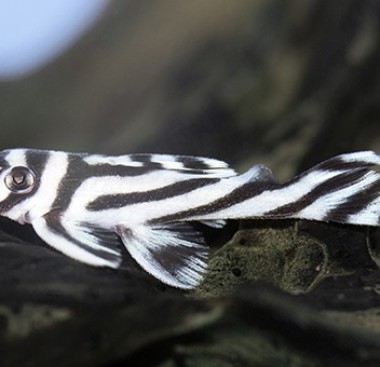The Necessity of Predators: Part 2
Part 2: The effects of predation on the ecosystem
By: Staff Date: 01/15/2012 Category: | Wildlife Journal |
In the 1960s, a University of Washington biologist named Robert Paine did an interesting experiment in the waters off the Olympic Peninsula. These coastal waters contain three distinct 'zones' of life. The shallowest zone is inhabited almost exclusively by barnacles. The middle zone contains mainly mussels. The lowest zone contains seaweed and a rich variety of shelled molluscs. Paine's experiment was simple: he constructed bottomless wire cages and put them on the bottom at various depths, with some cages in each of the three zones. The cages didn't bother the animals in any way; they just kept predators out.
Paine found that with the predators gone, the mussels rapidly expanded from their middle zone waters into the deeper zone, squeezing out all the other molluscs that used to live there. Eventually, the deep-zone cages held only mussels, nothing else. The mussels were so overwhelmingly superior at competing for space and food that no other species could even keep a foothold in the caged.areas. But outside the cages, the mussels stayed restricted to the midzone because only there were they relatively safe from predators. Other biologists have repeated and confirmed Paine's results. Predators play a vital role in controlling an ecosystem, because they keep any one species from becoming overwhelmingly dominant. Any species that gets too common becomes a good food source, so it becomes a target for hungry predators. This pattern tends to enhance ecological diversity, allowing multiple species to fill each niche where one might have been before.
If old predators can't take advantage when a new food source evolves, then new predators evolve to exploit it. And when they do, they can cause major shifts in an ecosystem. In the early Mesozoic Era, sea-floors were dominated by the group of shellfish called "flat clams:" oysters, mussels, quahogs, steamer clams, and their relatives. Their thick, flat shells were more than adequate defenses against existing predators. But in the mid-Mesozoic, a number of new predators appeared that could penetrate clam shells and eat the clams. The flat clam populations were decimated. Many species went extinct. The remainder survived by burrowing into the mud or by moving to habitats hostile to the predators. Behind them, they left many newly vacant niches, into which other lifeforms promptly moved and adapted. The clam-eaters had brought about a fundamental change in sea-floor life, a change which was never reversed and which persists today.
The counterpart of this idea is that when predators disappear, one species can become overwhelmingly dominant. In many parts of the eastern US, this is happening with whitetail deer. As their numbers increase, they strip an area bare in their search for food. A number of park services at both federal and state levels are experimenting with "anti-deer" enclosures, protecting small areas from deer with wire fences to give the vegetation inside a chance to recover from continuous cropping by hungry deer. The same phenomenon has been seen in the elk of northern Yellowstone National Park, where a population of elk that is at least three times too big for the land's capacity is eating everything green in sight.
The Yellowstone situation is particularly tragic. For most of its life, Yellowstone National Park has been cursed with a series of fundamentally flawed management policies. In a way, Yellowstone has become a massive repeat of Paine's mussel experiment. Elk are now the mussels of Yellowstone Park. In recent decades the elk herd has been permitted to grow freely, resulting in a population boom. Hungry elk overran the northern park area, eating everything they could stomach. In the process, they outcompeted and almost annihilated the park's populations of moose, bighorn sheep, pronghorn antelope, whitetail deer, and mule deer.
Indirectly, the elk also wrecked much of the Yellowstone river system. Hungry elk were particularly devastating to young aspen, willow, and other trees and shrubs growing along rivers and streams. Aspens and willows are favorite food of beaver. With no more aspens or willows, there was nothing for the beaver to eat. Elk feet also packed down the ground, resulting in increased runoff and silting of beaver ponds. Beaver colonies are now rare in Yellowstone. The elk have damaged the habitat to a point where beaver can no longer survive there. There isn't much else that can survive there either - the elk are eating everything in sight, and the result is something that many observers say looks more like a desert than a healthy, green landscape.
All of this stems from the fact that the Yellowstone elk herd has no natural checks on its numbers anymore other than food supply. There are no elk predators in Yellowstone National Park. Once wolves hunted elk, but wolves were gone from Yellowstone by 1930. Cougars are only occasional hunters of elk, but they might have switched to hunting elk as their preferred prey, whitetail deer, declined in Yellowstone. We'll never know, because no cougar has been seen in Yellowstone in almost 70 years. The only remaining large carnivorous mammal, the coyote, is too small to be a serious threat to elk.
References and further reading:
- Beak of the Finch, The -- Jonathan Weiner, © 1994, Vintage Books
- Nature's Keepers -- Budiansky, Stephen. © 1996, Vintage Books
- On Methuselah's Trail -- Ward, Peter Douglas, © 1992, W. H. Freeman & Company
- "The Big Ones Are Back!" National Wildlife, Oct/Nov 1978
- Playing God in Yellowstone - Alston Chase. © 1986, 1987 Harcourt Brace & Company .
photo credit: Lying wolf I via photopin (license)
This article originally published June, 1998.
About The Author
All Authors Of This Article: | Jonathon Sprague Woolf |












